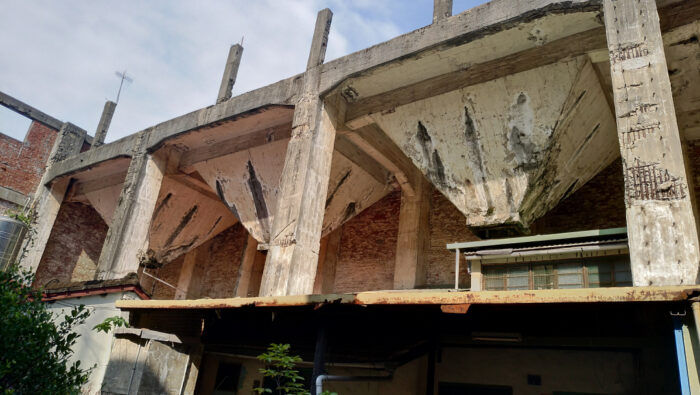新竹六燃大煙囪廠房的文化資產保存與詮釋
Preservation and Interpretation of Cultural Heritage: The Former Imperial Japanese Navy’s Sixth Fuel Factory, Hsinchu Branch
林雅萍 1、何黛雯 2、 鄧詠嫣 3 Ya-Ping Lini, Tai-Wen Hoii, Yung-Yen Tengiii
摘要 Abstract
新竹六燃大煙囪廠房的保存含納了多重文化社會的歷史意義且為為臺灣當代重要且特殊脈絡下所保存的二戰產業文化資產。在空間保存詮釋上,在臺灣文資法的「原有形貌修復」並無對於歷史建築保存的整體性 (integrity) 與真實性(authenticity)進一步說明,而致一般大眾仍多以「修舊如舊」或「斷代保存」等保存回復至特定年代,來認知歷史保存的方式,然而此臆測性的修復保存方式,往往造成現況歷史證物的佚失或損害,並折損歷史建築的真實性也無法彰顯歷史場所的當代價值。本文梳理關於歷史建築保存的整體性與真實性國際共識的憲章,強調實存空間的重要性,並依據產業文資與眷村聚落建築群的文化資產屬性,梳理其保存項目、地景敘事特徵以及詮釋呈現項目,作為後續保存六燃大煙囪廠房與眷村場域保存層級的基礎,其整體性與真實性除了六燃大煙囪廠房的產業文資特徵外,眷村日常生活與生產空間關係,為活出的場所精神。空間的存在作為語言的媒介,持續述說著六燃大煙囪廠房與眷村聚落建築群的場所精神。
The former Imperial Japanese Navy’s Sixth Fuel Factory, Hsinchu Branch is a vital asset preserved from WWII within the special context of Taiwan. Its preservation entails cultural, social and historical significance. Regarding the preservation and interpretation of this space, the requirements for preserving historical buildings’ integrity and authenticity are not specified in the Cultural Heritage Preservation Act, hence the stereotypes of historical building preservation as done with the method of “retaining vintage appearance through repair” or “periodization-based restoration.” Such a speculative method often causes loss or damage to historical artifacts, and compromises the authenticity of historical buildings, in which their contemporary value finds no expression. This article compiles the consensus on historical building preservation that emphasizes substantial spaces, and collates the landscape narratives in preservation projects according to the properties of cultural heritage. This endeavor is the basis for the ensuing preservation of the Sixth Fuel Factory and the embedded building cluster of military dependents’ village. The genius loci also manifests itself in the relations between the production space and the quotidian existence in the village. This history-laden space acts as a figurative language, a communication medium that keeps the torch of genius loci aflame at the Sixth Fuel Factory.
關鍵詞:二戰產業文化資產、眷村聚落建築群、場所精神、整體性與真實性、原貌修復
Keywords: WWII industrial heritage, Building clusters of military dependents’ villages, Genius loci, Integrity and authenticity, Original appearance restoration
1. 林雅萍建築師事務所、成功大學建築學系碩士。
2. 成功大學建築學系兼任助理教授級專家、中原大學設計學博士。
3. 陽明交通大學建築研究所碩士。
i. Lin Ya-Ping Architectural Firm. Master of the Department of Architecture NCKU.
ii. Expert at the Level of adjunct assistant professor, Department of Architecture NCKU.
Ph.D. of Design, Chung Yuan Christian University.
iii. Master of Graduate Institute of Architecture NYCU.


